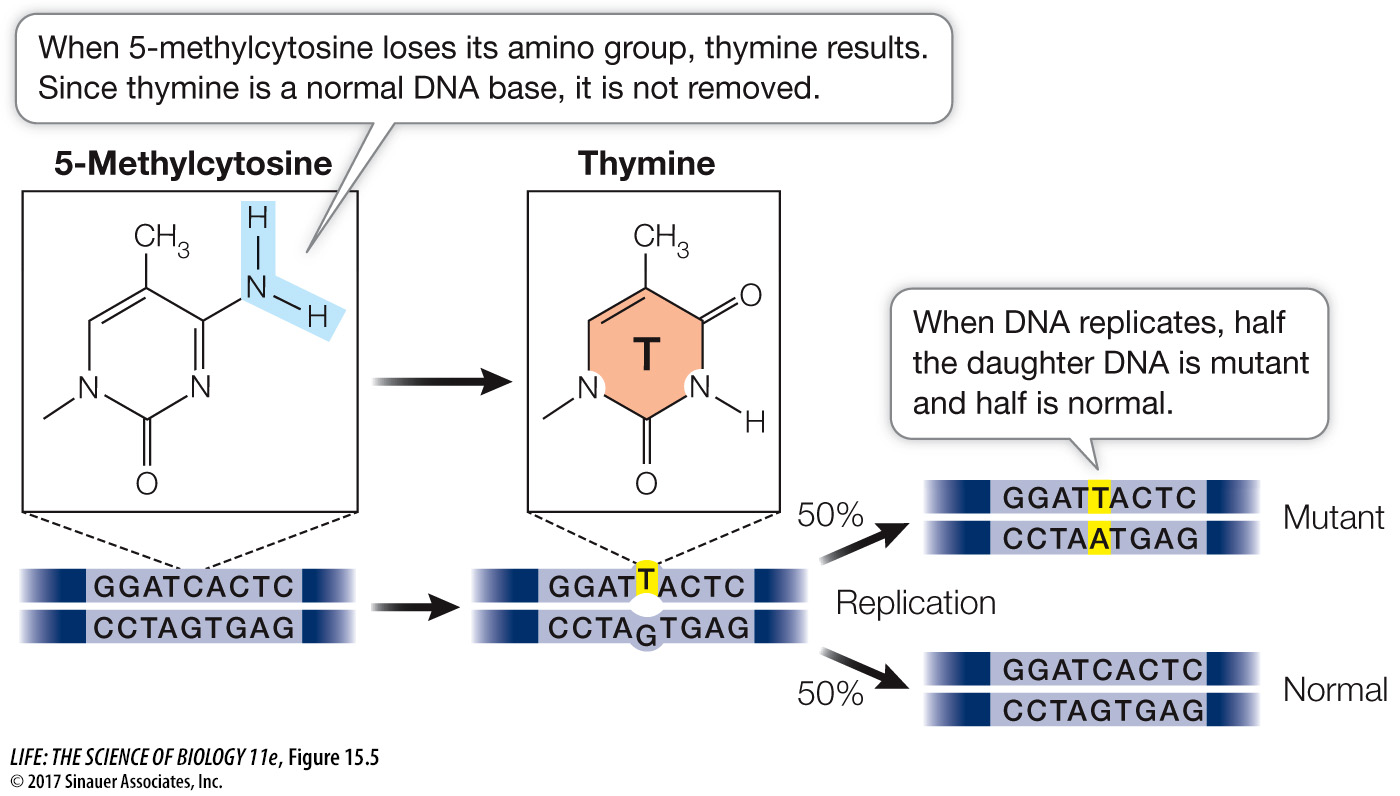Some base pairs are more vulnerable than others to mutation
In certain regions of DNA, many of the cytosine residues have methyl groups added at their 5 positions, forming 5−methylcytosine. Methylation plays an important role in gene regulation (discussed in Key Concept 16.4). DNA sequencing has revealed that mutation “hot spots” are often located where cytosines have been methylated. Figure 15.4 shows unmethylated cytosine, which can lose its amino group, either spontaneously (see Figure 15.4A) or because of a chemical mutagen, to form uracil (see Figure 15.4B). This type of error is usually detected by the cell and repaired, because uracil is recognized as inappropriate for DNA. However, when 5−methylcytosine (methylated cytosine) loses its amino group, the product is thymine, a natural base for DNA (Figure 15.5). The DNA repair mechanism ignores this thymine. During replication, however, the mismatch repair mechanism recognizes that G-
